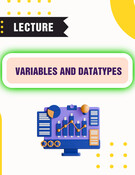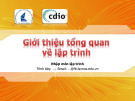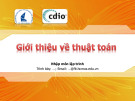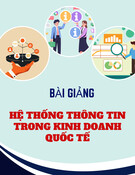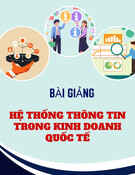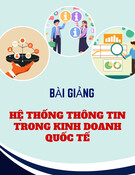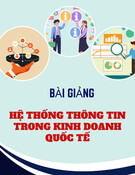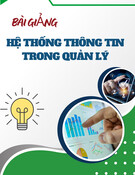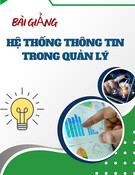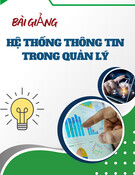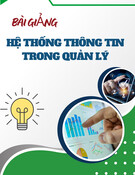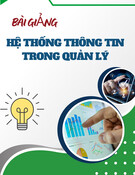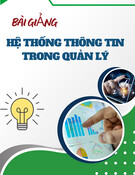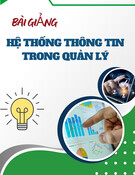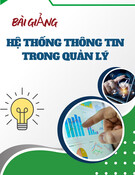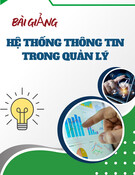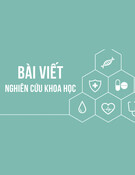
5
Chapter 5:
Modeling Systems Requirements:
Events and Things
Systems Analysis and Design in a Changing
World, 3rd Edition
5
Systems Analysis and Design in a Changing World, 3rd Edition 2
Learning Objectives
Explain the many reasons for creating information
system models
Describe three types of models and list some
specific models used for analysis and design
Explain how events can be used to define system
requirements
Identify and analyze events to which a system
responds
Recognize that events trigger system activities or
use cases
5
Systems Analysis and Design in a Changing World, 3rd Edition 3
Learning Objectives (continued)
Explain how the concept of things in the system
also defines requirements
Explain the similarities and the differences
between data entities and objects
Identify and analyze data entities and objects
needed in the system
Read, interpret, and create an entity-relationship
diagram
Read, interpret, and create a class diagram
5
Systems Analysis and Design in a Changing World, 3rd Edition 4
Overview
Document functional requirements by creating
models
Models created during analysis phase activity:
Define system requirements
Two concepts define system requirements in
traditional approach and object-oriented
approach
Events
Things
5
Systems Analysis and Design in a Changing World, 3rd Edition 5
Models and Modeling
Analyst describes information system
requirements using a collection of models
Complex systems require more than one type of
model
Models represent some aspect of the system
being built
Process of creating model helps analyst clarify
and refine design
Models assist communication with system users
5
Systems Analysis and Design in a Changing World, 3rd Edition 6
Reasons for Modeling

5
Systems Analysis and Design in a Changing World, 3rd Edition 7
Types of Models
Different types of models are used in information
systems development
Mathematical - formulas that describe technical
aspects of the system
Descriptive - narrative memos, reports, or lists that
describe aspects of the system
Graphical - diagrams and schematic
representations of some aspect of the system
5
Systems Analysis and Design in a Changing World, 3rd Edition 8
Overview of Models Used
in Analysis and Design
Analysis phase activity named “define system
requirements”
Logical models
Provide detail without regard to specific technology
Design phase
Physical models
Provide technical details
Extend logical models
5
Systems Analysis and Design in a Changing World, 3rd Edition 9
Models Used in Analysis
5
Systems Analysis and Design in a Changing World, 3rd Edition 10
Models Used in Design
5
Systems Analysis and Design in a Changing World, 3rd Edition 11
Events and System Requirements
Events
Occurrences at a specific time and place
Trigger all system processing
Requirement definition
Determine relevant events
External events first
Temporal events second
Decompose system into manageable units
5
Systems Analysis and Design in a Changing World, 3rd Edition 12
Events Affecting a Charge Account
Processing System

5
Systems Analysis and Design in a Changing World, 3rd Edition 13
Types of Events
External
Outside system
Initiated by external agent or actor
Temporal
Occurs as result of reaching a point in time
Based on system deadlines
State
Something inside system triggers processing need
5
Systems Analysis and Design in a Changing World, 3rd Edition 14
External Event Checklist
5
Systems Analysis and Design in a Changing World, 3rd Edition 15
Temporal Event Checklist
5
Systems Analysis and Design in a Changing World, 3rd Edition 16
Identifying Events
Can be difficult to determine
Often confused with conditions and responses
May be useful to trace a transaction’s life cycle
Certain events left to design phase
Systems controls to protect system integrity
Perfect technology assumption defers events
5
Systems Analysis and Design in a Changing World, 3rd Edition 17
Sequence of Actions that Lead up to Only
One Event Affecting the System
5
Systems Analysis and Design in a Changing World, 3rd Edition 18
Sequence of “Transactions”
for One Specific Customer
Resulting in Many Events

5
Systems Analysis and Design in a Changing World, 3rd Edition 19
Events Deferred Until the Design Phase
5
Systems Analysis and Design in a Changing World, 3rd Edition 20
Events in the RMO case
Important external events involve customers
Customer checks item availability, customer
places order, customer changes or cancels order
Other external events involve departments
Shipping fulfills order, marketing sends promotion
to customer, merchandising updates catalog
Temporal events include periodic reports
Time to produce order summary reports, Time to
produce fulfillment summary reports
5
Systems Analysis and Design in a Changing World, 3rd Edition 21
Information about each Event
in an Event Table
5
Systems Analysis and Design in a Changing World, 3rd Edition 22
Things and System Requirements
Define system requirements by understanding
system information that needs to be stored
Store information about things in the problem
domain that people deal with when they do their
work
Analysts identify these types of things by
considering each event in the event list
What things does the system need to know about
and store information about?
5
Systems Analysis and Design in a Changing World, 3rd Edition 23
Types of Things
5
Systems Analysis and Design in a Changing World, 3rd Edition 24
Procedure for Developing an
Initial List of Things
Step 1: Using the event table and information
about each event, identify all nouns about system
Step 2: Using other information from existing
systems, current procedures, and current reports
or forms, add items or categories of information
needed
Step 3: Refine list and record assumptions or
issues to explore

5
Systems Analysis and Design in a Changing World, 3rd Edition 25
Characteristics of Things
Relationship
Naturally occurring association among specific
things
Occur in two directions
Number of associations is cardinality or multiplicity
Binary, unary, ternary, n-ary
Attribute
One specific piece of information about a thing
5
Systems Analysis and Design in a Changing World, 3rd Edition 26
Relationships Naturally Occur Between
Things
5
Systems Analysis and Design in a Changing World, 3rd Edition 27
Cardinality/Multiplicity of Relationships
5
Systems Analysis and Design in a Changing World, 3rd Edition 28
Attributes and Values
5
Systems Analysis and Design in a Changing World, 3rd Edition 29
Data Entities
Things system needs to store data about in
traditional IS approach
Modeled with entity-relationship diagram (ERD)
Requirements model used to create the database
design model for relational database
5
Systems Analysis and Design in a Changing World, 3rd Edition 30
Objects
Objects do the work in system and store
information in object-oriented approach
Objects have behaviors and attributes
Class: Type of thing
Object: Each specific thing
Methods: Behaviors of objects of the class
Objects contain values for attributes and methods
for operating on those attributes
An object is encapsulated –a self-contained unit

